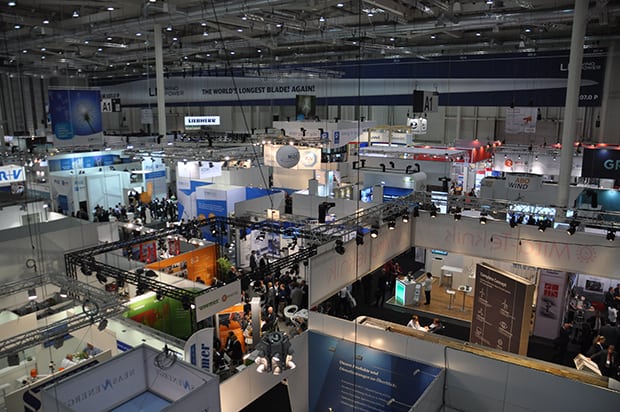Global Wind Summit Showcases the Increasing Power of the Segment
More than 35,000 visitors from 100 nations were expected to attend the vast Global Wind Summit, which began Tuesday, September 25, in Hamburg, Germany’s Exposition Center.
The expo is one of the world’s largest wind energy events. Held every two years and organized by WindEurope, the Global Wind Energy Association, and VDMA Power Systems, it consists of both the WindEnergy Hamburg Expo and the WindEurope Conference. About 1,400 exhibitors, speakers, energy ministers, European Union commissioners, and CEOs gave presentations covering the latest technologies and strategies under the theme: “Breaking new ground.” The sheer size of the event (Figure 1) vividly illustrates the strength of the on and offshore wind sector, its growing supply chains, and increasing capacity to enable a global energy decarbonization.
 |
1. Wind expo draws visitors from around the world. The world’s biggest wind energy event, the Global Wind Summit, began September 25 in Hamburg, Germany. Source: Lee Buchsbaum |
Generating roughly 5% of global energy, the summit brought together 16 turbine manufacturers including Chinese and Indian producers. In addition to discussing the expanding role of wind, daily themes included advancing generation capacity, digitization, new technologies (such as floating offshore wind), financing, and investment strategies.
As the Summit opened, WindEurope began disseminating its latest study, detailing how more than 20 GW of wind capacity could be installed annually between 2030 and 2050, covering almost 40% of the continent’s needs, simultaneously becoming less expensive per kilowatt hour as turbines become ever larger.
Though a pathway supported in part by the International Energy Agency, at the moment carbon generation globally is actually increasing and wind installations in Europe, including market-leader Germany, are falling. Indeed, according to the German HSH Nordbank, following a record of almost 17 GW of additional on- and offshore capacity, 2018 is on track for only another 13 GW, with the same predicted for 2019. Due mostly to changes in Germany’s Energiewende strategies that now rely on auctions, the drop is also due to permitting rule delays for new French wind farms. Nevertheless, Nordbank predicts a sharp rebound toward 2020 as Spain, Sweden, and Norway begin deploying new offshore farms. However, U.S., Indian, and African markets are expanding.
On the technological side, producers showcased the development of ever-larger capacities. MHI Vestas launched its new 10-MW version of the company’s V164 offshore turbine. Nordex also discussed its new N149 4.0-4.5 MW on-shore prototype that, after a challenging trial period, just received test certificates.
Indeed, at one of the most well-attended sessions treating ever-larger turbine ratings, GE subsidiary LM Wind Power’s Senior Director John Korsgaard stated that moving from the under-development 12-MW Haliade-X to 20 MW or more single-unit turbine capacity in the near term is “perfectly feasible.” Predicting 250-meter rotors (the company displayed a mockup of the 107-meter Haliade-X rotor at the Summit) to soon be a reality, he stated he could see no technological reason why these figures or higher couldn’t be achieved.
“Cost models will determine how big turbines will become,” he said. But turning to the much anticipated Haliade-X being developed for the French offshore markets, he assured attendees that “the design has been fixed and we are preparing for production. We will deliver the first blades next year.”
—Lee Buchsbaum (www.lmbphotography.com), a former editor and contributor to Coal Age, Mining, and EnergyBiz, has covered coal and other industrial subjects for nearly 20 years and is a seasoned industrial photographer.